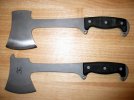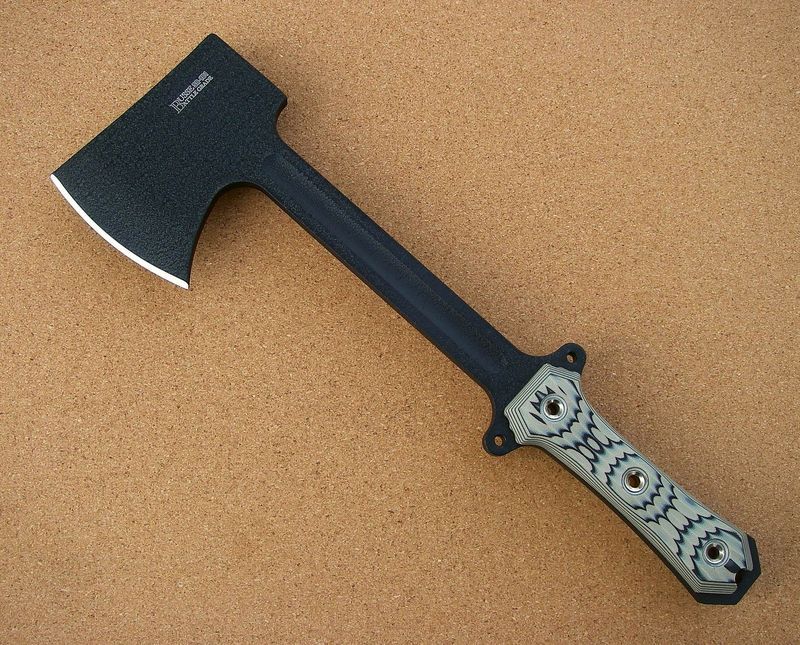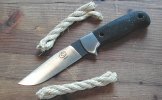Thank you.
Yes, it was all done by me. Well, I did have a little help,
 stjones
stjones
was making sure my whiskey glass didn't run dry.
As for the drilling INFI part, I've described it as a "stone cold b***h" before. It's not really all that difficult to drill, it was more the repeated sharpening of a solid carbide bit that was the

part. I'm sure with a better way to control pressure on the cutting edge, it wouldn't be that bad. Though I learned afterwards that a straight flute drill bit rather than a twist might have made it easier. I used what I had though. I kept it well lubricated with four letter words and cutting fluid, and after about 4 or 5 resharpenings I got through. The rest was easy. A bunch of small cuts, with it laying on packed snow to keep it cool, then onto the belt grinder to finish off, then reinstalled the handle.
View attachment 1272974 View attachment 1272975







 part. I'm sure with a better way to control pressure on the cutting edge, it wouldn't be that bad. Though I learned afterwards that a straight flute drill bit rather than a twist might have made it easier. I used what I had though. I kept it well lubricated with four letter words and cutting fluid, and after about 4 or 5 resharpenings I got through. The rest was easy. A bunch of small cuts, with it laying on packed snow to keep it cool, then onto the belt grinder to finish off, then reinstalled the handle.
part. I'm sure with a better way to control pressure on the cutting edge, it wouldn't be that bad. Though I learned afterwards that a straight flute drill bit rather than a twist might have made it easier. I used what I had though. I kept it well lubricated with four letter words and cutting fluid, and after about 4 or 5 resharpenings I got through. The rest was easy. A bunch of small cuts, with it laying on packed snow to keep it cool, then onto the belt grinder to finish off, then reinstalled the handle. 
